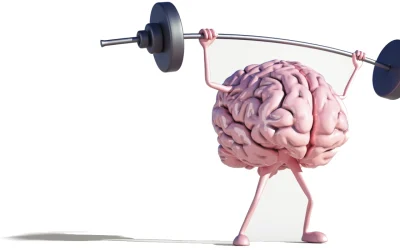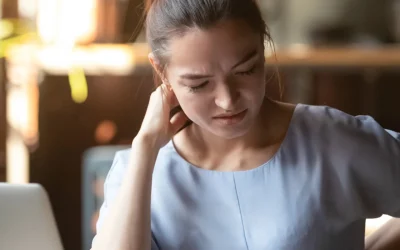In recognition of International Self-Care Day on Monday, July 24, 2023, this week’s feature is dedicated to understanding and overcoming self-care barriers. Last week, I had an enlightening conversation on this topic with several friends. One admitted, “I don’t know what it looks like or how to do it.” She’s probably not alone. We all hear that self-care is essential, but we don’t often receive instruction on what it is our how to do it.
So let’s begin with a simple definition: self-care is anything we do that creates, preserves, or enhances our well-being. It is preventive care for our physical, emotional, mental, and spiritual selves. For my visual learners, the International Self-Care Foundation developed a framework of seven ‘pillars’ to help us visualize the broad scope of self-care.
Pillars of Self-Care
- Health literacy – Accessing information and services that maintain our health
- Mental well-being – Having a positive outlook on life and our contribution.
- Physical activity – Frequency and intensity matter and must be individually tailored
- Healthy eating – Access to nutritious food; not just the choice or desire to eat healthy
- Risk avoidance – Knowing what lowers health risks and taking the necessary measures
- Good hygiene – Access to and use of clean water, soap, and hygiene products
- Rational use of resources – Access and knowledge of what resources to use and when
The word “access” is there for a reason. Self-care is a broad subject, encompassing individual life and public policy. It’s not as simple as taking personal responsibility for our well-being. There are barriers that a single person cannot overcome alone. Where we live, work, and who’s in charge can make self-care easier or more complicated.
Let’s return to the conversation I had last week. I started the conversation by asking, “We hear a lot about self-care but not about how to handle situations that prevent self-care. What gets in your way?” Now I’m asking you to read below the descriptions of possible barriers. Which ones affect you?
Systemic Barriers
Before we jump right into what individuals can do, let’s explore the barriers we can’t control – the ones created by public policies, healthcare systems, corporate interests, and even international politics. Even if we want to exercise good self-care, some barriers often seem out of control.
- Pillar #1 – Health Literacy
There’s much conflicting information, and few people understand where to access accurate information. Even if we want to know how to be healthy, how can we tell if the available information is true? Making accurate information available in a format the average person can understand is a job for healthcare policy experts. Unfortunately, trust in experts is at an all-time low. People are more likely to believe the clickbait article on social media than their doctors. - Pillar #2 – Mental & Emotional Well-Being
Even if there wasn’t a shortage of mental health professionals, there is a problem with access and affordability. Having health insurance alone will not solve these problems. Health insurance companies are notorious for denying care or setting low reimbursement rates that providers can’t afford to stay in business. - Pillar #3 – Physical Activity
In populated areas, the lack of safe public green spaces prevents poor people from getting outside and moving. Air pollution, harsh climate, and personal safety concerns hinder physical activity. While we’re on the topic, let’s not forget the lack of wheelchair and mobility aid access to public recreational spaces. - Pillar #4 – Healthy Eating
Food deserts are commonplace in crowded population centers. Individuals needing personal transportation must walk several miles to reach a grocery store with wholesome, nutritious food. It’s unfair and classist to lecture people on healthy eating when healthy food isn’t readily available. - Pillar #5 – Risk Avoidance
Legal mandates are ineffective prevention strategies, yet the stick is used more often than the carrot. Public education is the best way to encourage people to reduce risk. Whether it’s vaccination, quitting smoking, or wearing a seatbelt – our best option is to teach the truth. - Pillar #6 – Good Hygiene
Maintaining good hygiene is a situation where all the education in the world only goes so far without access to clean, running water and soap. This situation doesn’t just happen in third-world countries. Even in developed countries, water quality isn’t always safe or available. Until world leaders solve the systemic issues affecting access to safe water for all, hygiene will be a problem. - Pillar #7 – Rational Use of Resources
Many people use emergency rooms for primary health care. This isn’t because they don’t know about other options. It’s often because they don’t have access to them due to lack of insurance, language barriers, or lack of health education. Far too few understand the safe use of prescription medication, over-the-counter medicines, and dietary supplements. Our modern societies don’t teach people what they need to know about caring for themselves.
Cultural or Societal Barriers
These barriers may vary from household to household as cultural influences include family culture and norms. Certain practices that are forbidden or ridiculed in one culture group may be acceptable in another. These barriers also include stigma about accessing or avoiding certain self-care practices.
Stigma is a top barrier.
Stigma was a barrier for my friends. More than one identified “guilt” as their most significant barrier to self-care. They struggled to feel they deserved to take care of themselves. Even when they did something to care for themselves, they felt guilty. Another subtle barrier for the group was the social pressure to care for others. Putting themselves first felt selfish. They struggled to make time for self-care because there were always other tasks. They didn’t feel entitled to care for themselves until all the work was done. Are these barriers for you? Look at the possible social walls below to see which ones are getting in your way.
- Pillar #1 – Health Literacy
Health literacy is greatly influenced by generational knowledge that may or may not be suitable for our health. What we learn in our families and cultural groups may contradict public health messages. In this case, we may ignore the experts in favor of our grandmother’s cure. Additionally, the experiences of earlier generations, family members, or friends may affect our willingness to trust the experts. - Pillar #2 – Mental & Emotional Well-Being
Mental health stigma is real. Most people prefer to sort out their problems rather than seek professional help. Whether or not you see a therapist may depend mainly on the opinion of your closest friends and family. - Pillar #3 – Physical Activity
Family dynamics, prior experiences, and job and home demands affect our activity levels. Those who find an enjoyable activity tend to exercise more than those who don’t. Injuries and chronic pain also affect a person’s movement. Finally, our beliefs about exercise affect our willingness to exercise regularly. - Pillar #4 – Healthy Eating
As adults, we tend to eat what we were offered as children. Unless we make a conscious effort to expand our diet, we will not change. Portion sizes, easy availability of convenience foods, and the rush of modern life impact our ability to make healthy choices. - Pillar #5 – Risk Avoidance
Family and cultural history with risky behaviors often determine our behavior much more than legal or physical consequences. Think of all the people who have started smoking after all the warnings that it causes cancer. Future death isn’t enough of a deterrent. - Pillar #6 – Good Hygiene
For people who live with a disability, maintaining good hygiene can be a big challenge. The challenge is not well-understood when the problems are invisible (chronic pain, mental health disorders, etc.). It’s common to hear people with disabilities say, “Sometimes just having a shower wears me out for the day.” A lack of understanding creates a culture of judgment and an absence of empathy. - Pillar #7 – Rational Use of Resources
Cultural norms will dictate what health products and services people will consider and what will be rejected. There is also the grim reality that not everyone can afford access to wellness products and services that would improve health and prevent disease or injury.
Personal Barriers
Each of us also has personal barriers. The unique structural, societal, and cultural influences that make up our barriers can feel overwhelming. In many cases, it’s easier to give up and not pay attention. We slog through life with little attention paid to our well-being. We tell ourselves we’re too busy, that other things are more important. We hear the word “self-care” and immediately tune out because we think it’s out of our reach. The truth is that we have no idea what self-care means at all.
A recent discussion with friends highlighted this reality. I asked them what barriers prevented them from engaging in self-care. Their responses were incredible. They described the very self-care behaviors listed above as barriers to self-care! When asked how they spend their days, they talked about cooking, keeping the house clean, spending time with loved ones, engaging in recreation, exercising, and caring for their health. Each of them saw self-care as an indulgence – something they earned after all the tasks of life were done.
One pillar of self-care they all said was lacking: Mental Well-being. They believed that mental well-being was a luxury they could not afford. Everyone talked about feeling guilty when paying attention to their mental health – as though they had to earn it. One woman said perfectly, “I feel guilty – I should be doing this for someone else instead of doing it for me.” Another woman shared a thought she’d discovered that described most of what we do as self-care as “aftercare” – as though we are responding to feeling burnt out rather that preventing burnout in the first place.
Fighting Self-Care Stigma
Their responses (and maybe yours) are steeped in internalized stigma. Internalized stigma happens when critical messages about a particular trait or activity are so pervasive that they become the expected norm. People who struggle to overcome this trait or action believe that society is correct. They start seeing themselves as lazy, worthless, and unimportant, thinking they can change the unchangeable. They will avoid healthy but stigmatized behavior because society says it’s wrong. We’ve all heard that mental illness is stigmatized. Self-care that maintains sound mental health is stigmatized, too.
How can we protect ourselves from internalizing this stigma? Using the image of these pillars is one good strategy. Ignoring our needs is more complicated when we recognize that mental health is necessary for overall health. Those negative, critical messages in our heads are liars. Taking time to rest, enjoying some private “me time,” and doing things that make us feel cared for and valued – are essential to our mental well-being. We will burn out if we keep going and doing without regard for our physical or emotional reserves. Few of us even consider how much “doing” we can do before we need to rest. There is a limit to “doing” and “giving.” Just like a car eventually runs out of gas or batteries die. Our physical, mental, and emotional reserves are limited. We must stop and refuel from time to time.
What refuels us is as unique as what burns our energy. Only you can say what activities fill up your reserves. Whatever it is, please put it on the calendar. It’s just as important as everything else. If you ignore the need to refuel, you will crash. None of us are the Energizer Bunny. It might help to remember that it’s a fictional character, and even Energizer batteries die.
Do you need help finding a therapist?
No problem!
I offer free 30-minute video consultations to anyone looking for a therapist.
Just book a free consult and I’ll help you get started.






